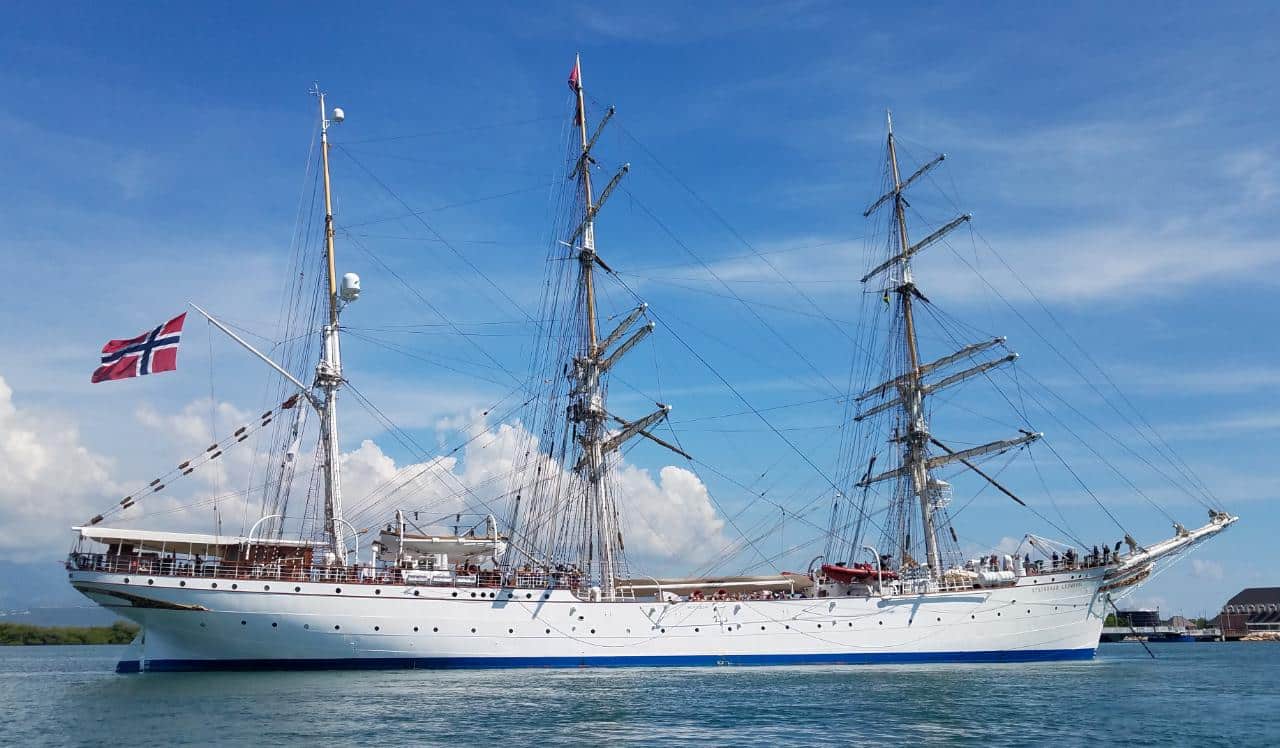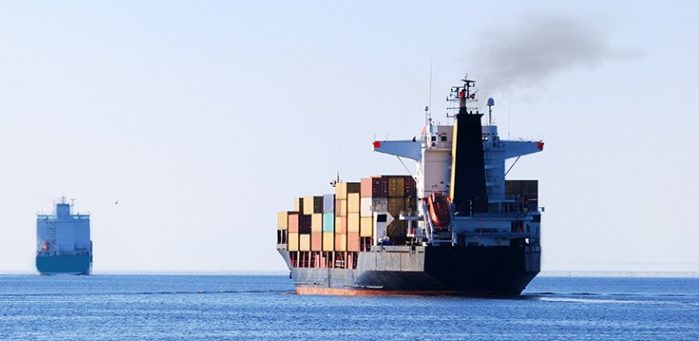
The Norwegian sailing vessel “Statsraad Lehmkuhl” is visiting Jamaica from November 13 to November 17. The “sailing beauty” arrived yesterday, Saturday, November 13, at Port Royal Cruise Ship Terminal.
A lot of people were hoping to see a vessel under sail arriving in Port Royal. But, unfortunately, that doesn’t happen. I don’t think that the pirates would have such high expectations of a warm welcome when the people were seeing their sails approaching what we call today the Eastern Channel. Anyway, back to the Lehmkuhl.
The vessel’s visit is part of the One Ocean Expedition, a scientific-orientated voyage in the context of the United Nations (UN) Decade of Ocean Science to create awareness and share knowledge about the positive role of the ocean.

The Statsraad Lehmkuhl was built in Germany in 1914 at the shipyard Tecklenborg in Geestemuende and christened with the somewhat elongated name Grossherzog Friedrich August, the last reigning Grand Duke of Oldenburg.
That shipyard was specialized for fast sailing vessels, and some of the world-famous Flying P-Liner were built there. Flying P-Liners are sailing ships built in the second half of the 19th century up to 1914, owned by the shipping company F. Laeisz. They were famous for their robustness, safety, and speed. With the beginning of the First World War in 1914, many sailing ships of the shipping company F. Laeisz interned in Chile and then had to be handed over to the Allies as a reparation.
That happened to the Statsraad Lehmkuhl too.
She was a part of the reparation given to the UK. Kristofer Lehmkuhl bought the ship in 1921 from Britain and put it into service as a sail training vessel under the Norwegian flag from 1923.
Why did all the ship names of the Flying P-Liner start with the letter P?
66 of the 86 sailing ships owned by shipping company F. Laeisz, bore names with the initial letter “P”. This is based on a small bark that was baptized PUDEL – after the nickname of shipowner’s wife Sophie Laeisz. That tradition is still alive if you have a closer look at the names of the vessels of the Honorary Consul of Jamaica in Germany, Peter Harren.
How long needed a Flying-P- Liner to cross the Atlantic compared to a modern cargo ship?
The Flying-P-Liner were fast, and their primary purpose was to sail to Chile to transport the urgently needed saltpeter back to Europe. A sailing vessel like the Pamir, the world’s last commercial sailing ship, had a top speed of 16 knots; the regular cruise speed was around 9 knots. A one-way trip from Hamburg to Iquique, the principal Chilean nitrate ports, was around 60 days, including to go around the dangerous Cape Hoorn. Crossing the Atlantic was done in less than a month.
Crossing time of modern container ship
There were times when a container ship could cross the Atlantic between 5 to 6 days, which is pretty fast. But to save fuel, they were slowing down. The average travel between Hamburg/Rotterdam to Jamaica is nowadays between 12 and 16 days.
CO2 footprint of the shipping industry?
If ocean shipping were a country, it would be the sixth-largest carbon emitter, releasing more CO2 annually than Germany (2.17 percent). International shipping accounts for 2.89 percent of all global greenhouse gas emissions, according to the International Maritime Organization (IMO). That is a lot for a single industry. No wonder a lot of brainpower is going into the research to find alternatives, like Hydrogen or LNG. But guess what, sails could be an option too.
> Source for the emission of International Shipping: https://www.imo.org/en/OurWork/Environment/Pages/GHG-Emissions.aspx
> Source for Germany CO2 emission: https://www.worldometers.info/co2-emissions/germany-co2-emissions/

The comeback of sail-driven/supported ships
The era of commercial sailing has been over for nearly 150 years. But there are signs of a revival of wind-powered ships. In the context of the debate about the negative effects of climate change and about reducing CO2 emissions in the shipping industry, this development does not come as a surprise. And the COVID-19-related supply chain disruption may lead to a new realization that speed is not as important as reliability.
Actually, there are two important concepts to use the power of the wind. One is the construction of modern sailing ships, which will not look exactly like the old clippers did. The second approach is to install sail technology on a typical container ship as an additional propulsion system.
Both concepts like to make use of the most significant advantage of using the wind to move the ship:
- the wind is free as well as clean, and
- thanks to today’s big weather data, it can be predicted with reasonable accuracy.
That sounds like science-fiction, but it isn’t. There is a lot of research going on, and promising projects are on the way.
